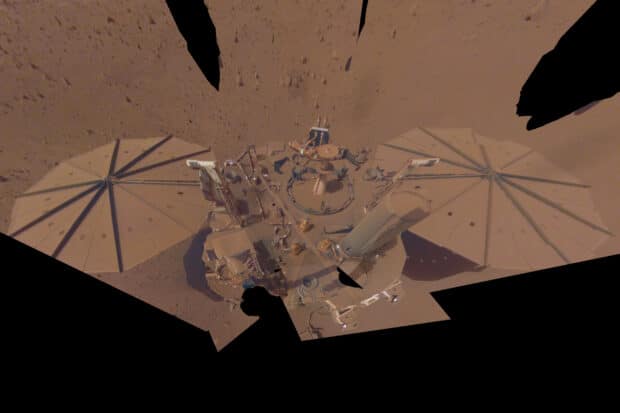kkjili On Mars, ocean’s worth of water may be hiding below its surface – study

 FILE PHOTO: This image provided by NASA shows the InSight Mars lander in a selfie photo composite on April 24, 2022, the 1,211th Martian day, or sol, of the mission. (NASA/JPL-Caltech via Associated Press, File)
FILE PHOTO: This image provided by NASA shows the InSight Mars lander in a selfie photo composite on April 24, 2022, the 1,211th Martian day, or sol, of the mission. (NASA/JPL-Caltech via Associated Press, File)
CAPE CANAVERAL, Florida — Mars may be drenched beneath its surface, with enough water hiding in the cracks of underground rocks to form a global ocean, new research suggests.
The findings released Monday are based on seismic measurements from NASA’s Mars InSight lander, which detected more than 1,300 marsquakes before shutting down two years ago.
This water – believed to be seven miles to 12 miles (11.5 kilometers to 20 kilometers) down in the Martian crust – most likely would have seeped from the surface billions of years ago when Mars harbored rivers, lakes, and possibly oceans, according to the lead scientist, Vashan Wright of the University of California San Diego’s Scripps Institution of Oceanography.
Article continues after this advertisementJust because water still may be sloshing around inside Mars does not mean it holds life, Wright said.
FEATURED STORIES TECHNOLOGY vivo launches V40 Lite with 5000mAh battery covered by 50-month warranty, starts at Php 13,999 TECHNOLOGY Galaxy Buds3 Pro: Delivering tailored sound wherever you go TECHNOLOGY Very mindful, very intuitive: ASUS’ most superior AI PC yet, the Zenbook S 14, empowers you to achieve more“Instead, our findings mean that there are environments that could possibly be habitable,” he said in an email.
READ: Life on Mars? It could have dropped its teddy
Article continues after this advertisementHis team combined computer models with InSight readings including the quakes’ velocity in determining underground water was the most likely explanation. The results appeared Monday in the Proceedings of the National Academy of Sciences.
Article continues after this advertisementIf InSight’s location at Elysium Planitia near Mars’ equator is representative of the rest of the red planet, the underground water would be enough to fill a global ocean a mile or so (1 kilometer to 2 kilometers) deep, Wright said.
Article continues after this advertisementREAD: How many astronauts do we need for a Mars colony?
It would take drills and other equipment to confirm the presence of water and seek out any potential signs of microbial life.
Article continues after this advertisementAlthough the InSight lander is no longer working, scientists continue to analyze the data collected from 2018 through 2022, in search of more information about Mars’ interior.
Wet almost all over more than 3 billion years ago, Mars is thought to have lost its surface water as its atmosphere thinned, turning the planet into the dry, dusty world known today. Scientists theorize much of this ancient water escaped out into space or remained buried below.
Subscribe to our daily newsletter

